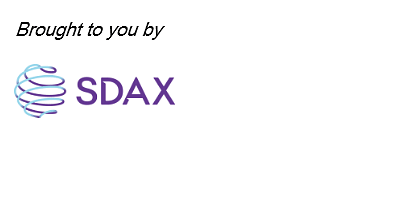Mention digital tokens, and high-risk investments such as cryptocurrencies come to mind.
The reality, though, is that digital tokens can be used to represent a wide range of real-world assets such as shares traded in the stock market and physical property that generate steady streams of rental income.
With the maturing of blockchain – the underlying technology on which cryptocurrencies are created – companies can now use the same technology to facilitate investing in financial instruments, equities, debt products and other assets that had previously not been available to ordinary investors.
These digital assets are created via two processes – tokenisation, which involves digitally recording ownership of an asset on the blockchain, a digital ledger that resides on millions of computers rather than on a central database; and fractionalisation, which is the process of dividing an asset into smaller, more affordable bits.
For example, the owner of an office building, who once had to look for deep-pocketed institutions and top wealthy family offices to buy the entire building in a single purchase, can now sell the property to thousands of individuals via a trusted digital marketplace.
The same technology can be used to raise money for an investment fund or borrow from a large pool of different individual lenders.
With the blockchain, digital records of the ownership rights cannot be altered, and all subsequent transactions involving these rights are clearly recorded, making the process a lot more secure.
Ownership interests on the blockchain are legally binding as set out in the underlying contractual documents.
Lower barriers to entry
Platforms that make use of blockchain technology to tokenise assets are lowering barriers to entry for ordinary investors, since assets worth hundreds of millions of dollars can now be digitally subdivided into smaller units.
One such platform is SDAX, a Singapore-based digital exchange which focuses on institutional-grade real estate and environmental, social and governance (ESG)-related opportunities. Investments listed on SDAX can be as low as $1,000, though some are restricted to accredited investors.
Mr Raymond Poh, chief executive officer of SDAX, says: “Unlike many digital exchanges, SDAX will offer only higher-quality investments with managed risk levels through a screening process. Every debt or investment security that appears on our platform is backed by physical assets or strong cash flows.”
“We place great emphasis in curating the right deals based on sound financial principles, using blockchain smart contracts as the enabler for the next level of private market investments," he adds.
SDAX, which is licensed by the Monetary Authority of Singapore (MAS), offers investors an additional layer of protection by keeping their deposits in separate accounts so there is clarity about ownership.
SDAX’s shareholders include well-known companies such as PSA International (which is owned by Temasek), Straits Trading and ESR, a global real estate investment firm that focuses on new economy assets such as data centres, warehouses and other logistic centres.
Data centres, social housing
Building and managing data centres – the huge complexes that house hundreds of computer servers – used to be a business that only large corporations and extremely wealthy individuals could invest in because of the tens of millions of dollars required. Through data centres, investors can ride on the growth of the digital economy and the shift towards cloud computing, where computing services such as software and databases are delivered over the Internet.
SDAX is currently offering investors an opportunity to invest in a data centre that allows for capturing the appreciation of the development. Unlike listed real estate investment trusts, which focus on collecting rent from completed facilities, the data centre development also allows investors to profit from construction and development.
Another SDAX offering is a fund that invests in social housing in the United Kingdom, providing a social good as well as potential returns for investors.
Besides investment funds, which are long-term investments, investors can also involve themselves in private credit investment deals, earning an interest rate that is more competitive than what they can get from fixed deposits and government bonds.
Such loans carry risks but SDAX does vet issuers through S&P’s robust database and credit risk monitoring system, and focuses on loans that are backed by real assets or cash flows.
How SDAX operates
SDAX helps companies and fund managers raise capital efficiently by connecting them to institutional, accredited and retail investors.

As seen from the diagram, companies and fund managers that want to raise debt or equity will first work with SDAX to structure the investment. If the proposed deal passes due diligence, the details are published on the SDAX platform for investors to assess and subscribe if they wish to.
Once the fundraising is completed, the digital tokens can be traded on SDAX’s exchange much like stocks on any listed stock exchange, providing investors with price discovery and liquidity.
While retail investors can invest in many of the digital tokens offered via SDAX, trading is restricted to institutions and accredited investors to comply with MAS regulations.
To be an accredited investor1, a person must have an annual income of $300,000 or more than $1 million in net financial assets, which refer to investment holdings and do not include the value of the person’s home. Investors who meet the criteria will have to opt in, meaning accreditation is not automatic.
A more level playing field
In the past, many unlisted investments were available only to very wealthy investors such as ultra-high net-worth individuals who are clients of private banks or those who have their own family offices. SDAX wants to level the playing field by broadening the range of investments available to a wider base of investors.
“Our vision is to be a leading global digital investment ecosystem, empowering investors to access all assets that enable impactful wealth creation,” says Mr Poh.


